In the coming months, you’ll be treated to articles and updates written by park staff from around the state. We’ll feature unique events, nature’s seasonal changes, interesting stories from history, outdoor hobbies, and more.
A goal all park employees share—from the most behind-the-scenes support staff to the top administrators—is to help make sure you have the best experience possible. We know your free time is valuable, and we want to help you make the most of your schedule while visiting our state parks.

A park interpreter helps a group discover the wonders of birding.
We’d like to use this first blog entry to tell you more about one particular team of employees whose primary job function is to help you have fun. On our main Web site, and here on this blog, you’ll often hear us mention our “park interpreters” who coordinate the parks’ “interpretive programs.” Many people aren’t sure exactly what we mean by that. Today, we’ll explain:
What is a park interpreter?

Interpreters can help you learn bird calls.
The most common question our interpreters in Arkansas State Parks are asked is “What languages do you speak?” It is a fair question. Most people are familiar with the term “interpreter” in the realm of translating spoken or sign languages.
When you meet an interpreter in a state park, though, he or she might be fluent in a language other than English, but translating languages is not a main job responsibility. Rather, it is to interpret the natural, historical, or cultural resources of the site for park visitors.
In simpler terms, an interpreter’s job is to help make your visit to the park meaningful. When you visit a park, there are always plenty of activities for you to do on your own. You can hike a self-guided trail, enjoy scenic overlooks, rent a boat to go fishing or sightseeing, or just relax at your cabin or campsite.

Guided walks aid discovery.
Imagine, though, walking that same trail with a park interpreter as your guide. This is someone who understands the history of the area, who knows land, who lives in the park day in and day out, 365 days a year. He or she is in tune with nature’s rhythms and is able to point out things you might miss, such as bird songs in the tree canopy above, signs of wildlife foraging in the area, or remnants of a historical homestead.
Interpreters are the employees responsible for planning, publicizing, and presenting the fun, interactive, and educational programs for which Arkansas State Parks are known. Activities vary by site, but if your family has ever taken a guided hike, lake cruise, or kayak tour…or if you’ve attended an evening owl prowl, amphitheater talk, or campfire…or encountered a living history character, nature craft workshop, or outdoor skills demonstration, chances are good it was the park interpreter who served as your leader and guide.

Dutch oven cooking is a state park tradition.
Many interpreters are specialists in several subjects, and from time to time they offer multi-day workshops allowing visitors an immersion learning experience in a safe, supervised atmosphere. These include kids’ day camps, weekend family camping adventures, kayak and canoe overnight trips, Dutch oven cooking workshops, and many more.
In addition, it is often the park interpreters who research and write the brochures and exhibits you enjoy during your park visits.
Officially, our department uses the definition of interpretation adopted by the National Association for Interpretation, asserting that it is “a mission-based communication process that forges emotional and intellectual connections between the interests of the audience and the inherent meanings of the resource.”
Put more simply, says Administrator of Program Services Jay Miller, “Interpretation is communication that goes beyond facts to reveal what things mean, how they fit together, and why they matter.”
But I always thought they were called rangers…

What animals walked here?
Some park systems, including the National Park Service, refer to interpreters as “rangers.” In Arkansas State Parks, we do have employees with the job title of “ranger” at many park locations, but their main duties are public safety, park security, and law enforcement. Our rangers and interpreters work as a team to educate visitors about how to enjoy the parks safely and protect the valuable resources of the area.
In Arkansas, the interpreter positions used to be called “naturalists.” Today, having naturalist skills is still a major part of their job descriptions; however, they do much more than just identify plants and wildlife. They are biologists, geologists, botanists, historians, educators, and recreation specialists.
More importantly, they are communicators who encourage you to discover your own meanings in the parks. We believe that interpretation helps visitors better understand just how special our parks are. Through understanding, comes appreciation and protection of the parks so that we can remain here for generations to come.
Being an interpreter is my dream job; what does it take to become one?

Interpreters help you understand your surroundings.
All of our full-time park interpreters hold four-year degrees in a relevant major, such as biology, history, environmental science, park administration, communication, or education. They also are required to have professional experience doing frontline interpretation in the field. Many begin their careers as seasonal, or part-time, interpreters while completing their college degrees.
Interpreters are also encouraged to pursue credentials from the National Association for Interpretation, which is the recognized voice of the interpretive profession. Many have earned status as Certified Heritage Interpreters and/or Certified Interpretive Guides.
In addition, many complete specialized subject matter training from industry leaders. For example, we use the American Canoe Association’s standards for kayak training, and we use curriculum from the Leave No Trace Center for Outdoor Ethics for teaching camping and backpacking skills.
Sharing Our Passion
Park interpreters are passionate people. We love our parks and want you to love them too.
We eagerly share our experiences and knowledge. We work hard, doing many things behind the scenes that you may never know about, to help put you in the right place at the right time to create wonderful memories. We help you have special experiences like a hike along a rugged mountain trail, a kayak tour in the morning mist, a nighttime forest walk

Park Interpreter Adam Leslie
with owls hooting overhead, or a trip back in time to cook in cast iron and imagine what pioneer survival was like.
“It is the best job,” says Adam Leslie, our newest interpreter, stationed at Devil’s Den State Park in northwest Arkansas. “It really pushes me to use my education in fun ways.”

Park Interpreter Keith Covington
Keith Covington, interpreter at Moro Bay State Park in southeast Arkansas, agrees: “My experience as an interpreter has been wonderful. It is great to be able to share my love for the outdoors and this state with others.”
Sasha Bowles is a park interpreter at Lake Dardanelle State Park in Russellville. She says, “Being an interpreter is like igniting a spark and watching the blaze of wonder grow. I have the privilege of doing that almost daily. Someone took the time when

Park Interpreter Sasha Bowles
I was young to nurture the ‘wild’ child in me. Now I get to teach about and interact with our natural surroundings daily and nurture someone else’s ‘wild’ child.”
“It is really special to help a senior citizen see his first bald eagle in the wild, or to let a child

Asst. Park Superintendent Sarah Keating
light a campfire for the very first time or to see a family enjoy tasting food they made during an outdoor cooking workshop,” says Sarah Keating, Assistant Superintendent at Lake Dardanelle State Park in central Arkansas. (She is also a former interpreter there and now serves as an interpretive manager and trainer). “It’s really special when our interpreters get to see the light bulb go on in a visitor’s head during a program…their face shows it…it’s when they have that ‘a-ha’ moment of ‘I get it, I understand that this place is complex and special and neater than I ever imagined.’”
Deeper Meaning: It’s All About You

Remember lighting your first campfire…
Interpretation is more than just leading you down a trail, though, or simply showing you how to do things. Park interpreters are trained to engage you in conversation, find out what you’re interested in, and relate to you in a way that sparks inspiration to know more.
Good interpreters reveal meanings and relationships in the world around them. They ask questions, encourage thoughtful reflection, and listen to the stories that visitors are eager to share. But they don’t stop there. The best interpreters take these emotional and intellectual connections one step further and provoke visitors to act on their newfound interests. This action could be as simple as attending another program (and bringing friends and family

Interpreters facilitate hands on fun.
along) or as in-depth as joining the park’s “friends” group and becoming a loyal volunteer. Ultimately, we hope our visitors become more conservation-minded in the parks and in their daily lives at home.
“Park interpreters are the folks who get people to understand why parks are important,” says Richard Davies, Executive Director of the Arkansas Department of Parks & Tourism. “They answer the ‘so what?’ question for the public, and it is the public that votes and talks to legislators. This goes a long way to help keep us in the ‘forever business.’ We have a wonderful and dedicated interpretive staff in Arkansas State Parks, and in my view, we are better off for it.”
Schedule your next visit now!
Our park interpreters routinely schedule programs designed to help you make memories of a lifetime. We offer over 40,000 family-friendly programs and events each year, including lake tours on park party barges, guided hikes, birding adventures, living history demonstrations, nature games, fall foliage programs, historic site tours, bald eagle watches, spring wildflower walks, campfires, outdoor skills workshops, and much more.
One way you can maximize your time while visiting an Arkansas State Park is to know in advance what our park interpreters have planned during your scheduled trip. Or maybe, you want to plan a trip around a certain special event. Either way, be sure to take advantage of our fully searchable online calendar of events available to you year-round. This handy tool allows you to customize your search with specific dates, locations, and/or keywords. Save this page in your web “Favorites” and visit it often.

Be sure to bookmark our fully searchable online calendar of events.
You can customize your search by date, park location, city, zip code, and keyword (such as “kayak,” “archeology,” “birding,” or “day camp”). Programs involving physical activity are noted with a small red “heart-healthy” symbol. Your search results are sorted according to categories: events, programs, hikes & tours, workshops, and exhibits. Within each category they are sorted by start time and title.
When you find programs you like, we’ve made it easy for you to post the information on your online calendar, Facebook page, or Twitter account, so you can quickly make plans and invite family and friends.
It is important to note that scheduled programs and events are subject to change. We try not to cancel or change dates for events that have been publicized, but sometimes weather or other unforeseen circumstances require it. Before traveling, contact the park for program confirmation, further details, reservations when required, and to check on accessibility for visitors with disabilities.
Get started now by clicking here to see what’s happening in the parks today!

A Paddle Salute!

Field Interpreter Kelly Farrell
–Kelly Farrell has worked for Arkansas State Parks since 1999. She started her career at Lake Ouachita State Park and also worked five years at DeGray Lake Resort before moving to Little Rock, where she now serves as Field Interpreter and works statewide to train and support frontline interpreters. She holds credentials as a Certified Heritage Interpreter and Interpretive Trainer.



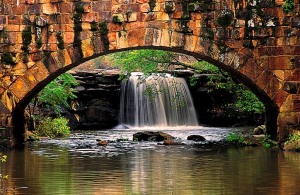





 Posted by Arkansas State Parks
Posted by Arkansas State Parks 


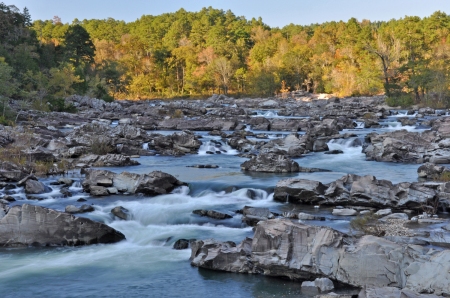



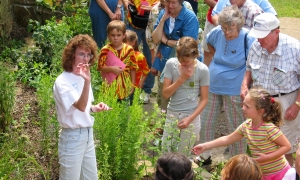
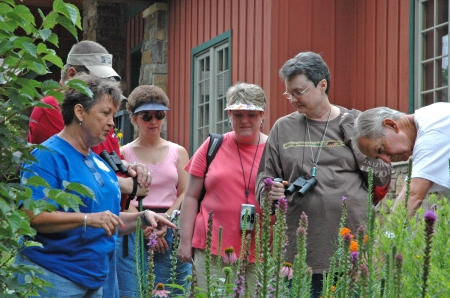





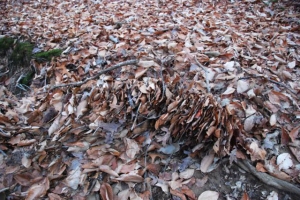




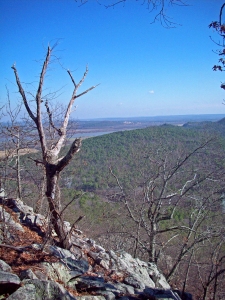
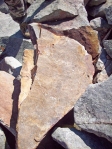
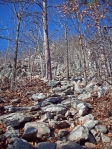
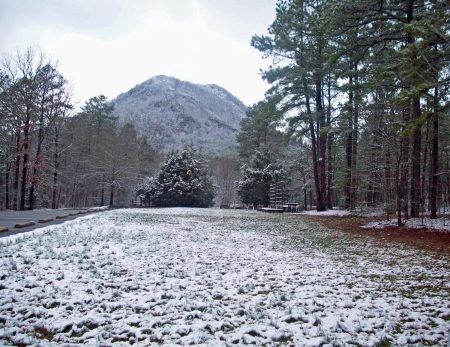





















 Facebook
Facebook Twitter
Twitter YouTube
YouTube
